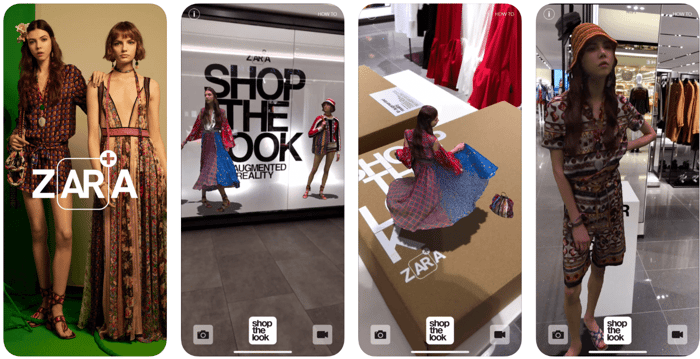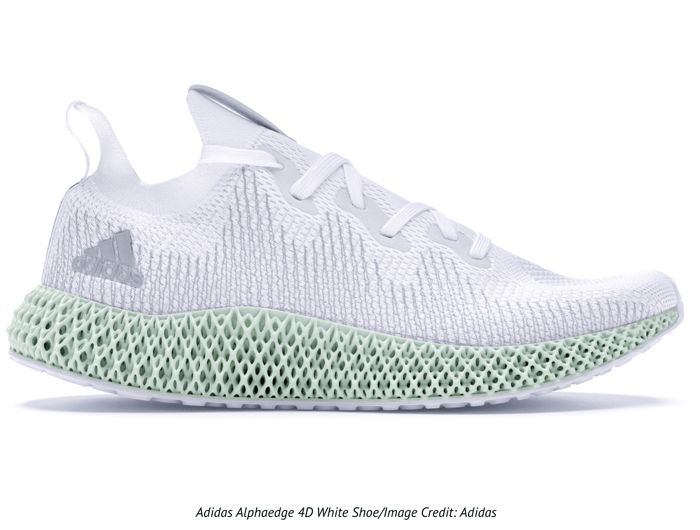The 10 Best Fashion e-Commerce Trends for 2025
Table of Contents
- 10 Best Fashion e-Commerce Trends for 2025
- Trend 1: Sustainable and Ethical Fashion
- Trend 2: AI-Powered Personalization
- Trend 3: Virtual Try-Ons
- Trend 4: Social Commerce
- Trend 5: Inclusive Fashion
- Trend 6: AI to reduce costs in e-commerce fashion
- Trend 7: Subscription-Based Models
- Trend 8: Hyper-Local Marketing
- Trend 9: 3D Printing in Fashion
- Trend 10: AI-Driven Predictive Analytics
- Conclusion
The e-commerce fashion industry is at the forefront of innovation, blending technology and creativity to meet the evolving demands of modern consumers. As we approach 2025, e-commerce fashion continues to redefine how we shop, offering convenience, personalization, and cutting-edge solutions.
This article dives into the 10 most influential trends shaping the future of e-commerce for fashion.
From sustainable practices to AI-driven personalization, these trends are transforming customer experiences and setting new standards for the industry. Brands that embrace these advancements will be well-positioned to thrive in an increasingly competitive landscape. Let’s explore how these 10 best trends are revolutionizing the fashion e-commerce space.
10 Best Fashion e-Commerce Trends for 2025
Trend 1: Sustainable and Ethical Fashion
Today’s consumers prioritize transparency and eco-friendly practices. In response, brands are increasingly adopting sustainable materials and implementing environmentally conscious manufacturing processes. Artificial intelligence (AI) plays a vital role by optimizing design processes, reducing waste, and minimizing carbon footprints. This movement not only benefits the environment but also fosters loyalty among socially conscious shoppers. Companies like Patagonia exemplify leadership in integrating sustainability into their business models, inspiring others to follow suit.
Trend 2: AI-Powered Personalization
Personalization has become crucial in the competitive e-commerce market, and artificial intelligence is leading this transformation. For example, Modelia, a leader in AI for fashion, enables brands to create customized images for any environment, allowing them to select the age, hair, ethnicity, and other features of their models, generating images that are undetectable to the human eye. By leveraging AI-driven tools for personalized marketing, businesses can exponentially increase sales at very low costs.
You can do all of this in three simple steps:
Trend 3: Virtual Try-Ons
Virtual try-ons powered by Augmented Reality (AR) are revolutionizing e-commerce fashion. This technology enables customers to visualize how garments will look and fit without stepping into a physical store. AR try-ons reduce uncertainties, lower return rates, and boost purchase confidence. Leading brands such as Zara and Gucci have embraced this innovation, offering immersive shopping experiences that bridge the gap between online and in-person retail.
Trend 4: Social Commerce
The fusion of shopping and social media platforms like Instagram and TikTok has redefined the customer journey. Social commerce allows consumers to discover, evaluate, and purchase products seamlessly through interactive features such as shoppable posts, live-streamed events, and influencer collaborations. This trend capitalizes on social proof and community engagement, delivering a shopping experience that resonates with tech-savvy audiences.
Trend 5: Inclusive Fashion
Inclusivity has become a hallmark of modern fashion, with brands broadening their product lines to accommodate diverse body types, genders, and cultural backgrounds. AI plays a significant role by analyzing data to design inclusive collections that appeal to global audiences. Companies like Savage X Fenty have set new standards for inclusivity by celebrating diversity through their campaigns and product offerings, reflecting the evolving values of today’s consumers.
Trend 6: AI to reduce costs in e-commerce fashion
- Color change:
This tool allows for digital modification of garment colors without the need to create physical prototypes in different shades. It not only saves materials and production time but also significantly reduces costs associated with sample design and manufacturing. Additionally, it enables brands to offer a broader range of colors to consumers without increasing expenses. Background change:
Eliminates the need for expensive photo shoots by allowing the digital replacement of image backgrounds. This is especially useful for maintaining a professional aesthetic tailored to different campaigns without the need to rent multiple locations or invest in travel and logistics for photography teams.Model change:
Allows for replacing real models with customizable digital models, reducing the need to transport teams and models to specific locations. Brands can select the physical characteristics of their models, such as age, ethnicity, and hair type, to create images perfectly aligned with their target audiences, all without the expenses of travel, accommodation, and staffing.Sketch to image:
Enables fast prototyping by transforming sketches into realistic images using AI. This allows designers to visualize and share ideas without the need to produce physical samples, reducing initial development costs and speeding up time-to-market.
Trend 7: Subscription-Based Models
Subscription services are gaining popularity as consumers seek convenience and curated shopping experiences. These models deliver personalized fashion selections on a regular basis, fostering brand loyalty and providing steady revenue streams. Companies like Stitch Fix have showcased the success of this approach, offering tailored solutions that cater to individual preferences and lifestyles.
Trend 8: Hyper-Local Marketing
As global e-commerce fashion expands, hyper-local marketing strategies are becoming increasingly critical. By leveraging AI-driven insights, brands can create campaigns tailored to specific regional demographics. This approach enhances engagement by addressing local preferences and cultural nuances. Whether it’s promoting weather-appropriate collections or partnering with local influencers, hyper-local marketing ensures relevance and resonance with target audiences.
Trend 9: 3D Printing in Fashion
3D printing is revolutionizing the fashion industry by enabling the creation of unique, made-to-order garments with minimal waste. This technology supports rapid prototyping and customization, allowing designers to innovate without high production costs. Brands like Adidas are leveraging 3D printing to develop cutting-edge footwear, paving the way for broader adoption across the industry.
Trend 10: AI-Driven Predictive Analytics
Predictive analytics powered by AI offers invaluable insights into consumer behavior and market trends. By analyzing data from multiple sources, brands can forecast demand, optimize inventory management, and minimize overproduction. This proactive strategy helps businesses stay ahead of trends while reducing inefficiencies. The integration of predictive analytics into fashion e-commerce strategies is proving to be a game-changer for maintaining a competitive edge.
Conclusion
The e-commerce fashion landscape is poised for remarkable growth and innovation as we approach 2025. From embracing sustainability to leveraging AI-driven solutions, these trends are shaping how fashion is designed, marketed, and consumed. Modelia stands out as a key enabler of this transformation, offering advanced AI tools at the best price that help fashion businesses seamlessly implement these trends. By integrating solutions, brands can meet evolving consumer expectations and thrive in an increasingly digital marketplace. Embracing these innovations not only ensures success but also sets the stage for a more inclusive, transparent, and sustainable fashion industry.
Let Modelia be the key to your success in this new era of creativity and innovation. Start your journey with Modelia today and see the difference it makes!
Subscribe to the Modelia newsletter for the latest updates and tips. Stay ahead in the world of fashion AI and never miss a beat!
How would you rate this article:
Related Articles
- What is Google's Virtual Try-On feature?
- What Are Digital Outfits? How AI Is Powering Virtual Style
- Fashion Modeling Basics: Trends, Innovations, and the Future of the Industry
- What is Apparel Branding?
- Top 5 AI fashion sketch generators for artwork & illustrations
- AI Fashion trends forecasting for 2025
- 7 Best fashion AI tools for designers
- The 6 Best Free Online Facial Expression Changer Tools to Customize Emotions in Images
- How to Start an Ecommerce Store: Essential Tips for Success
- Top 9 AI Image Description Generators to Create Accurate Captions Automatically
